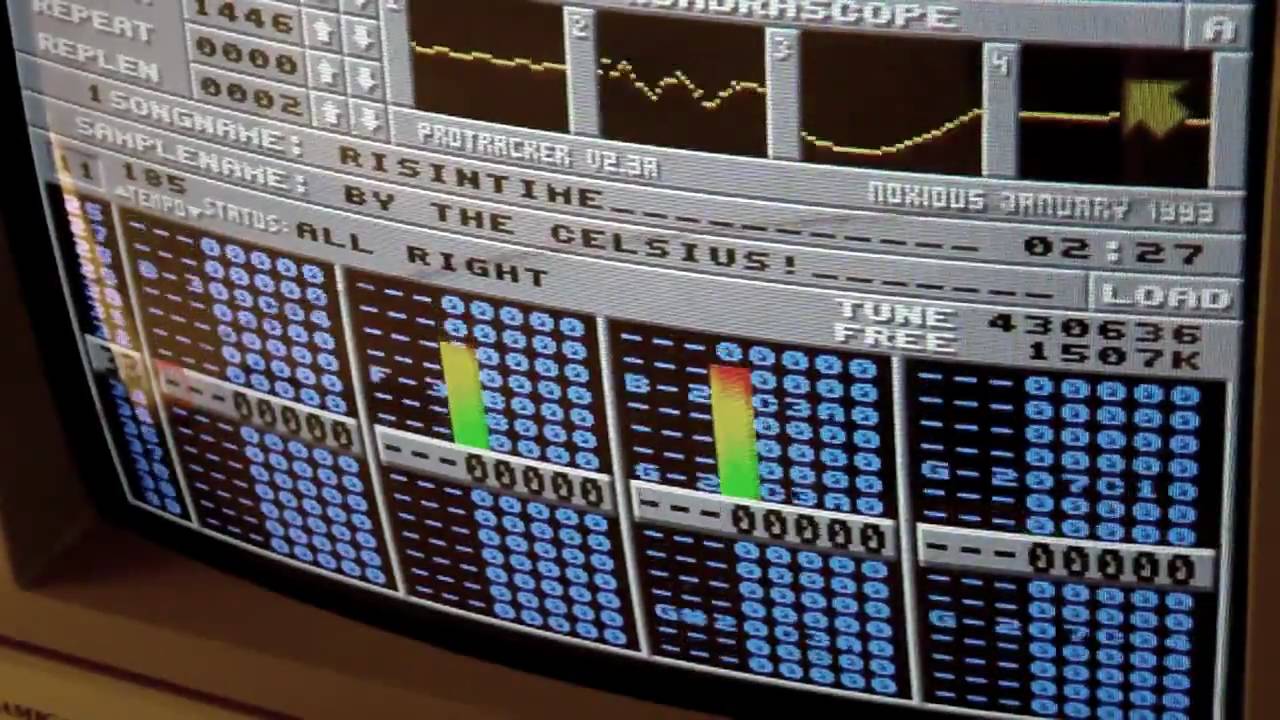Yeah, look at old modules until you find some, there should be archives sorted by genre.
Other than that: Have a breakbeat. Then make different “chops” starting with bassdrum, snare, or some hat/ghostsnare-pattern, but leave all trailing stuff in it. Then maybe sequence a very basic halftime-to-jungle-tempo-ragga-rhythm with it (bassdrum/snare), but in a single channel, and let the trailing stuff from the break hits play on, don’t cut it off. Do decorations with that hat/ghostsnare patterns, and let the other hits of it play on also, and stuff like this. You get the idea. It sound jungly. Try lots of (simple) patterns, and different “cuts” into the break to make your rythms. Some parts may use wilder cutting, but the principle is the same. You kind of keep the groove of the original break this way, it’s intermediate step between just looping the break and splitting it into oneshot-samples.
Try to have samples like that clean think “break” shaker pattern, shuffled groovy and such, and layer it upon the break. It’s important that these loops be not individual hits, but cuts with real groove and variation in sound. You can also sequence/cut the rhythmically, but less complex than the breakbeats.
You can layer two breaks that got cut the way above, but with different sound and different rhythms, so they sound like a single very complex percussion rhythm. When hats and snares sound very different, the better the effect will be. For trying different rhythms, start with like shifting one break by 1 or 1 1/2 beats relative to the other, and let it have different “trailing” patterns. You see - mayhem, the layered breaks jungle sound signature. Doing so deliberately is complex, but not impossible, random shit will often yield rewarding ryhthms. Don’t layer 6 breaks all the time, use it for climax, or short accents.
Pitch up everything in the tune, other than the main subbass. Yes, also the breaks. Breathe helium, kind of, the bass shall drag it down again and make it solid.
Some common fx used were a pad sample, pitched differently to make a chord progression, backdrop hooks from cheesy 80s disco tunes, pitched up a lot. That pitched 808 Bassdrum with long decay, used as subbass.
This is probably like how not only tracker people, but also the people with real emu samplers worked those days. But then again - a tracker was just a very cheap sampler, kind of.
To chop the breaks in renoise, choose method yourself - slice markers with “play on mode” can rock it, or just make cuts starting in the break from different positions, or the sample offset commands…
Sample people had, were from - duh, like where did people have samples from? Traded breaks among the percieved “elite”, until some were sold on cd, or in the tracker scene someone shared a module with a certain pure break in, and then everyone else ripped it. It be the beginning of the 90s, Internet was there, and before that lots BBS, everyone hat CD-Rom drives to rip CDs, and musicians often had other gear too. Be glad you can nowadays google all the breaks ever used.
